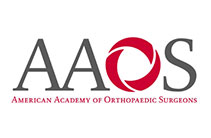Overview
Arthroscopy, also referred to as keyhole or minimally invasive surgery, is a procedure in which an arthroscope is inserted into a joint to check for any damage and to repair the problem at the same time.
An arthroscope is a small, fiber-optic instrument consisting of a lens, light source, and video camera. The camera projects an image of the inside of the joint onto a large screen monitor allowing the surgeon to look for any damage, assess the type of injury, and repair the problem.
What is Hip Arthroscopy?
Hip arthroscopy is a procedure in which the arthroscope is inserted into your hip joint to diagnose and treat various hip conditions. The procedure is carried out through very small incisions and helps your surgeon view the inside of your hip joint for any tissue damage or defects. Special surgical instruments are used to carry out repairs simultaneously in a minimally invasive manner.
Indications
A hip arthroscopy may be indicated for:
- Removal of torn cartilage or bone chips that cause hip pain and immobility.
- Repair a torn labrum, a fibrous cartilage ring along the border of the acetabular socket.
- Removal of bone spurs or extra bone growths caused by arthritis or an injury.
- Removal of part of the inflamed synovium, the membrane that lines the joint, in patients with inflammatory arthritis. This procedure is called a partial synovectomy.
- Repair of fractures or torn ligaments caused by trauma.
- Evaluation and diagnosis of conditions with unexplained pain, swelling, or stiffness in the hip that does not respond to conservative treatment.
Procedure
Hip arthroscopy is usually performed under general anesthesia, but epidural or spinal anesthesia may be administered depending on you and your surgeon’s preference. You will be placed in the supine position, lying on your back. A traction force is applied to create space within the joint so that the arthroscope can be admitted.
Your surgeon will make 2 or 3 small incisions, each about 1/4 inch in length around the hip joint. Through one of the incisions, the arthroscope is inserted. Along with it, a sterile solution is pumped into the joint to expand the joint area and create room for the surgeon to work.
Enlarged images on the television monitor allow your surgeon to visualize the joint clearly and determine the extent of damage so that it can be surgically treated.
Surgical instruments will be inserted through the other tiny incisions to treat the problem. After the surgery, the instruments are removed and the incisions are closed and covered with a bandage.
Benefits of Hip Arthroscopy
Hip arthroscopy can help eliminate the source of your hip pain and avoid or delay the need for a joint replacement.
The advantages of hip arthroscopy over traditional open hip surgery include:
- Smaller incisions
- Minimal trauma to surrounding ligaments, muscles, and other tissues
- Less pain
- Faster recovery
- Lower infection rate
- Less scarring
- Earlier mobilization
- Shorter hospital stay
Risks and Complications
As with any surgery, there are potential risks and complications involved. It is very important that you are informed of these risks before you decide to proceed. Possible risks and complications of hip arthroscopy include:
- Infection at the surgical incision site or in the joint space
- Nerve damage which may cause numbness, tingling, pain, and weakness
- Excess bleeding into the joint, a condition called hemarthrosis
- Formation of blood clots inside the deep veins of the legs which can travel to the lungs (pulmonary embolism).
Post-operative Care
Your doctor may advise you to take certain precautions to promote faster recovery and prevent further complications. These include:
- Taking pain medications as prescribed.
- Use of crutches to prevent or limit bearing weight on the operated hip
- Physical therapy exercises to restore normal hip function and improve flexibility and strength
- Eating a healthy diet and avoiding smoking
- Avoiding heavy lifting or strenuous exercises for the first few weeks after surgery
Summary
With advances in surgical techniques, arthroscopy plays an important role in the diagnosis and treatment of hip diseases. Patients can expect a quicker recovery with less post-operative complications following hip arthroscopy when compared to the open surgery.











